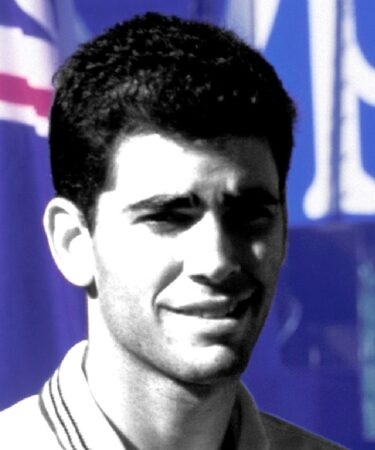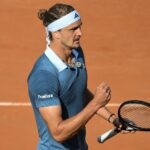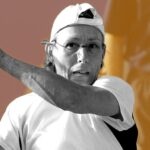November 29, 1991: The day Leconte upset Sampras to take step towards France’s first Davis Cup title in half a century
Every day, Tennis Majors takes you back to one of the most iconic moments in tennis history. On this day in tennis history, 159th-ranked Henri Leconte played lights-out tennis to beat Sampras and level the Davis Cup final at 1-1
 Leconte OTD 11_29
Image Credit – Panoramic/ Tennis Majors
Leconte OTD 11_29
Image Credit – Panoramic/ Tennis Majors
What exactly happened on that day?
On this day, November 29, in1991, in the Davis Cup final, Frenchman Henri Leconte delivered one of the most unexpected and impressive performances of all time to defeat world No 6 Pete Sampras in straight sets (6-4, 7-5, 6-4). The left-hander, who had been ranked No 5 in the world in 1986 but was now No 159 after undergoing back surgery, played flawless tennis to level the tie to 1-1 against the United States. The following day, he would also prevail in doubles, partnering Guy Forget, and on Sunday, France would win its first Davis Cup title in 59 years.
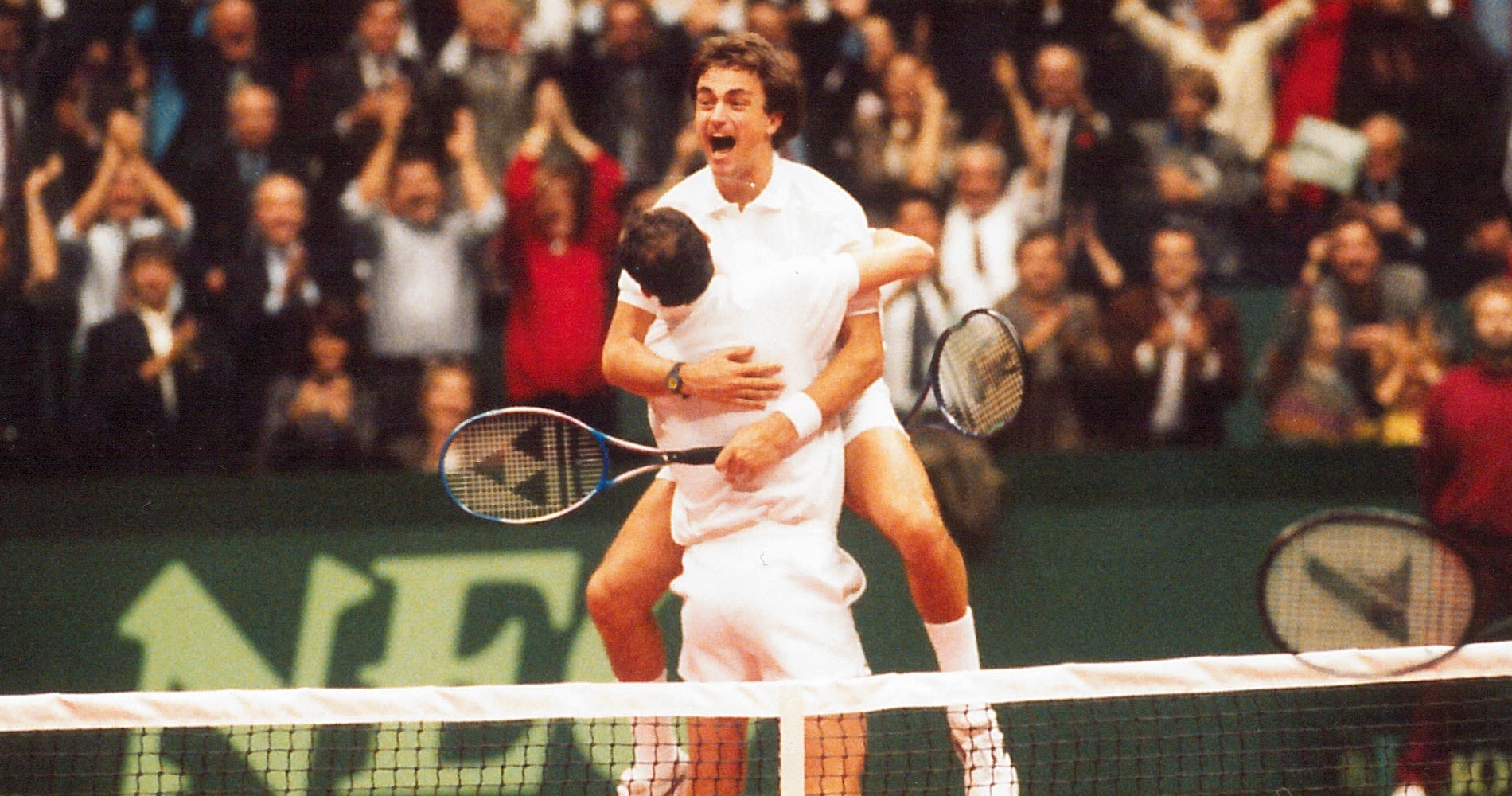
The players involved: Henri Leconte and Pete Sampras
- Henri Leconte: The talented Frenchman who made shots that didn’t exist
Henri Leconte was born in 1963 in Lillers, France. With his spectacular high-risk game, the southpaw drew attention for the first time when he won the juniors title at Roland-Garros in 1980. In 1982, he lifted his first crown on the main tour, defeating Mats Wilander in the Stockholm Open final (7-6, 6-3).
After having triumphed in doubles at Roland-Garros in 1984 (partnering Yannick Noah), he obtained his breakthrough Grand Slam singles result in 1985, reaching the quarter-finals at both Roland-Garros (lost to Wilander, 6-4, 7-6, 6-7, 7-5) and Wimbledon (lost to Boris Becker, 7-6, 3-6, 6-3, 6-4). In 1986, he went one step better at the same tournaments, reaching the semi-finals, defeated by Mikael Pernfors in Paris (2-6, 7-5, 7-6, 6-3) and by Becker in London (6-2, 6-4, 6-7, 6-3).
That year, he reached his highest ranking of world No 5. His best Grand Slam performance came at Roland-Garros in 1988, when he finished runner-up to Wilander (7-5, 6-2, 6-1).
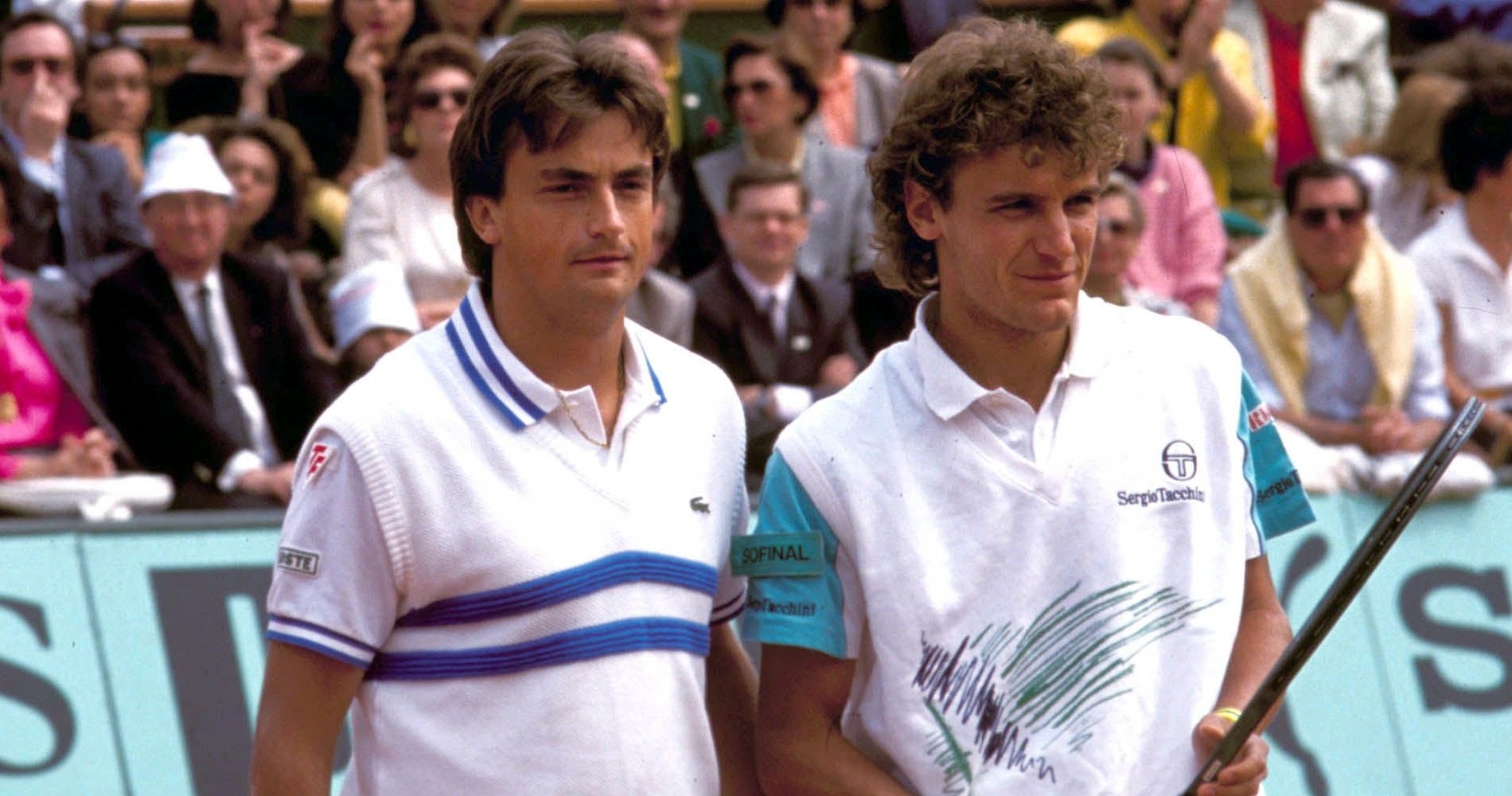
Unfortunately, Leconte was overwhelmed by the occasion and the few words he said during the trophy ceremony were misinterpreted by a part of the French crowd who ended up booing him. Leconte finished the year as world No 9, but from 1989, his career was hampered by several injuries, and he couldn’t perform regularly at his best level. Defined by Becker as “a player who makes shots that don’t exist”, and by Nick Bollettieri as a very dangerous player “because sometimes he doesn’t even know what he’s doing”, he had to undergo back surgery during the summer of 1991 and was now ranked 159th in the world.
- Pete Sampras: The youngest ever male player to win the US Open
Pete Sampras was born in 1971 in Washington DC, United States. Although he was a part of a golden American generation, along with Andre Agassi, Michael Chang and Jim Courier, Sampras was the last of them to become a top player. At the end of 1989, while his rivals had all claimed titles and achieved breakthrough Grand Slam performances, Sampras was still only 81st in the world.
In November that year, Ivan Lendl, world No 1 at the time, invited him to his house to practice with him for 10days: the young American then realized what kind of work was required to become a champion.
Six months later, he had already broken into the top 20 after having claimed his first two titles in Philadelphia and Manchester. In September 1990, he surprised the tennis world by becoming the youngest player to ever triumph at the US Open, defeating Agassi in the final (6-4, 6-3, 6-2). Thanks to this great win, he entered the top 10, but in the first half of 1991, Sampras struggled to follow-up on his big win.
During the American summer tour, he had obtained better results, winning titles in Los Angeles, Indianapolis and Lyon, but he failed to defend his US Open title, defeated by Courier in the quarter-finals (6-2, 7-6, 7-6). However, a first title at the season-ending Masters Cup, where he took his revenge against Courier (3-6, 7-6, 6-3, 6-4), confirmed his steady improvements.
The place: Lyon, France
The 1991 Davis Cup final was held in Lyon, France, at the Palais des Sports de Gerland, an indoor venue which could host up to 8,000 spectators. The French team chose a fast indoor surface that matched the game style of their best players, especially Guy Forget, who was world No 7 and had just won the Paris Indoor Open on a similar surface.
The facts: Leconte confident of victory even before taking the court
In France, the Davis Cup final was the main sports event of the 1991 winter season. The French team, despite its impressive list of players, had not performed very well since losing against the United States in the1982 final. However, this year, with Yannick Noah as their captain, all the players had performed at their best level to propel the team into the final.
As soon as the semi-final against Yugoslavia was over, the captain started to think of a plan to upset the all-star American team in the final. The United States had three top 10 players (Sampras, Agassi and Courier) as well as one of the best doubles team in the world (Ken Flach and Robert Seguso). Noah felt that he had to pull out something, or someone, special. That someone was Henri Leconte, the only player who, on his best days, could upset Sampras and Agassi, and could also challenge the best at doubles.
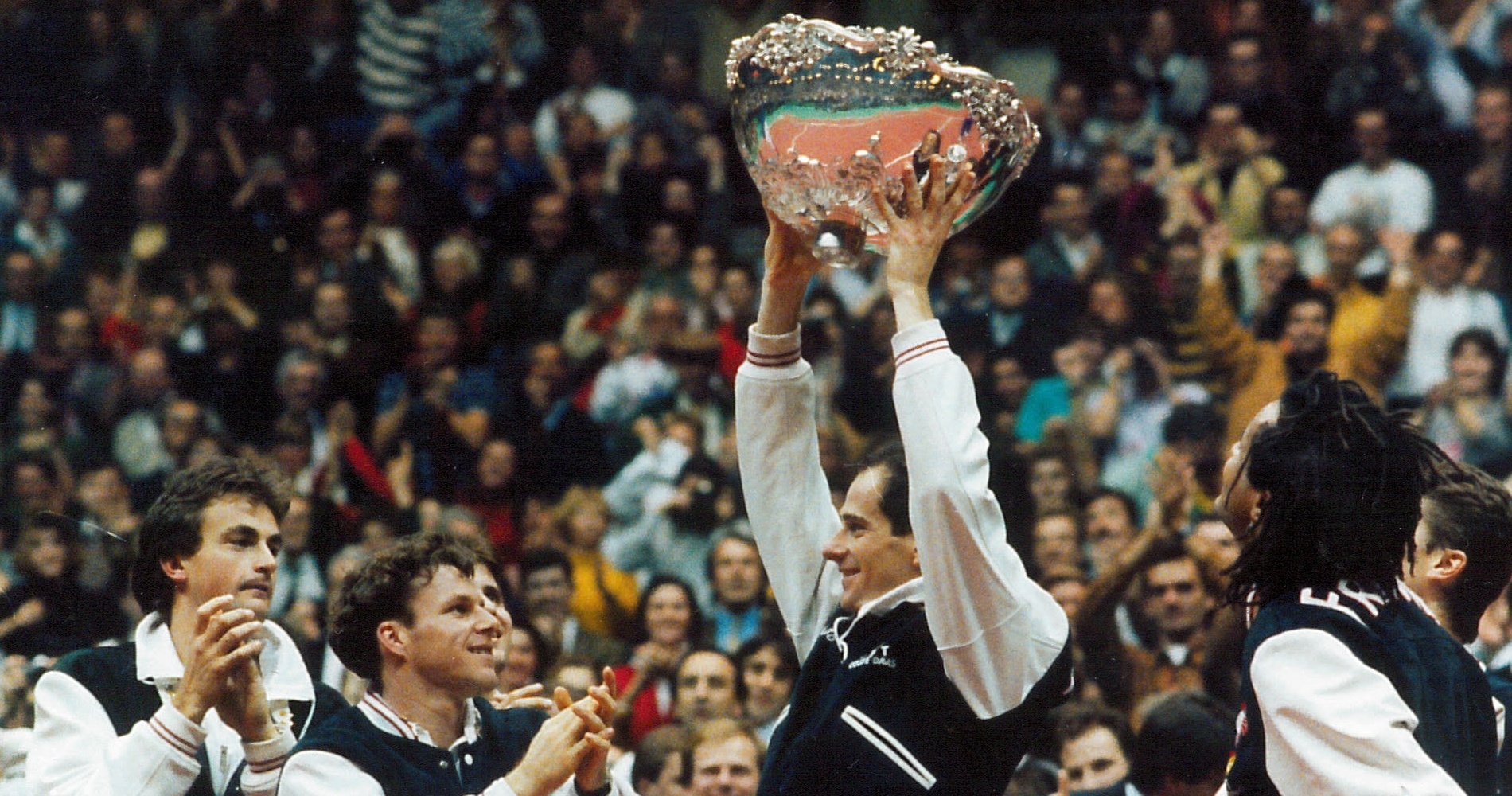
The major problem with Noah’s plan was that, at the time, Leconte was recovering from back surgery. Ranked world No 159, some thought that his career might even be over, and that he would never play again at his best level. Nonetheless, he accepted Noah’s call and underwent a real commando course in order to get ready for the final. His conditioning improved, and his game slowly returned back. The week prior to the event, preparing for the doubles, he didn’t lose a single set against his teammates. The Monday before the final, Noah came to Leconte to announce to him that considering his level, he was going to play in singles as well.
“Don’t worry, I’m going to kick his ass“
Henri Leconte to Guy Forget about Pete Sampras
“Sure, no worries,” said the left-hander.
On Friday, November 29, the long-awaited final didn’t start well for the French team. Their No 1 player, Guy Forget, was defeated by Agassi (6-7, 6-2, 6-1, 6-2). Instead of putting extra pressure on Leconte’s shoulders, the scenario added to his determination, and he kept his cool before facing the Masters Cup champion.
“Don’t worry, I’m going to kick his ass,” he told Forget as he was going out for the match.
And he did.
“From the first point, I knew that I was going to beat him up. I pulled out everything. This backhand volleys that I pulled out…I felt invincible,” Leconte would recall years later, for eurosport.fr. “It was one of these days when you feel like you can do anything. It just works. I was like a painter with his brush, it was magical.“
Three sets later, Leconte had defeated Sampras in straight sets 6-4, 7-5, 6-3.
“I told you so,” he said to Forget.
What next?
The next day, Leconte and Forget would win the 16 first points of the doubles match against Flach and Seguso, before going on to win 6-1, 6-4, 4-6, 6-2. On Sunday, Forget would manage to beat Sampras (7-6, 3-6, 6-3, 6-4) to give France its first Davis Cup title since 1932.
In 1992, Leconte would receive a wild card for Roland-Garros, where he would achieve his last remarkable Grand Slam result by reaching the semi-finals (defeated by Petr Korda, 6-2, 7-6, 6-3). He would claim the ninth and final title of his career in Halle in 1993 (defeating Andrei Medvedev in the final, 6-2, 6-3).
Pete Sampras would recover from this nightmare and become world No 1 in 1993. He would set a record of 14 Grand Slam titles claimed during his career, triumphing seven times at Wimbledon, five times at Flushing Meadows and twice in Australia, but at Roland-Garros, his best performance would remain a semi-final reached in 1996.
He would also win the Masters Cup no less than five times, and he would spend 286 weeks as world No 1. Although most of his amazing records would seem unbeatable at the time of his retirement in 2003, many of them would be beaten by Roger Federer and Novak Djokovic in the years later.









